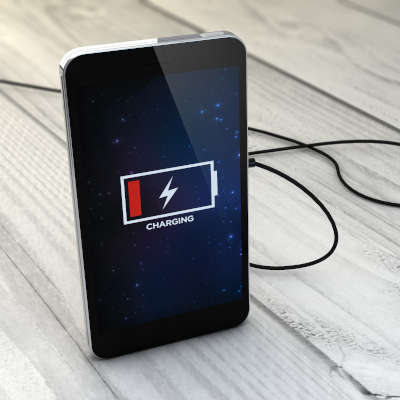 Considering how much as we rely on our mobile devices each day, it comes as no surprise how stressful the “LOW BATTERY” notification can be. While you might assume that it only seems to appear earlier and earlier in the day, there are in fact a variety of conditions that cause your device to die much faster. That’s why we wanted to share a few tips to help you understand what is happening to your battery, and what you can do to manage its longevity a little better.
Considering how much as we rely on our mobile devices each day, it comes as no surprise how stressful the “LOW BATTERY” notification can be. While you might assume that it only seems to appear earlier and earlier in the day, there are in fact a variety of conditions that cause your device to die much faster. That’s why we wanted to share a few tips to help you understand what is happening to your battery, and what you can do to manage its longevity a little better.
We use our mobile devices every single day, so it comes as no surprise that a “low battery” notification can be really stressful. While it might seem like it appears earlier and earlier in the day, there are actually reasons why your battery might be dying. Here are some cell phone battery tips, so you can help manage its longevity a bit better.
Condition 1: Your Battery Degrades Over Time, and Naturally Will Hold Less Power in a Full Charge
Batteries have been one of the fastest components to fail in smartphones and other devices. Manufacturers even admit that after a year, most batteries have lost a lot of their available life. After this, they lose 20 percent after 400 charges. You can see how important it is to adjust how a device is charged to change the way its lifespan works.
Condition 2: Extreme Temperatures Can Encourage Battery Degradation
A battery’s capacity can be impacted by high and low temperatures alike. This common issue is most likely for people who leave their devices in their cars. If your phone is in your car, it can overheat or be exposed to really cold temperatures. We would recommend that you keep your device at room temperature if you can, so your battery doesn’t lose too much potential.
Condition 3: Don’t Let Your Battery Run Out of Charge
There used to be a common strain of advice that you should let your phone die all the way down to zero before you charge it again. With new batteries, this is actually not true. Instead, you should keep your device’s battery between 20 and 90 percent.
Condition 4: The Screen is Too Bright
Obviously, keeping your screen on full brightness can drain your battery that day, but it can actually also harm your battery in the long run. iOS and Android devices actually have built-in utilities that can help you control your screen’s brightness, and you can actually manually set your brightness to be the lowest brightness.
Condition 5: The Screen Stays on Too Long
You can actually make your screen turn off automatically if there is no activity, but this range can be a few seconds to a few minutes. There are even applications that can give you even more control and some phones make it possible for you not to use unnecessary battery life.
Condition 6: You Have Not Adjusted Your On-Board Battery Saver
A lot of smartphones come with battery savers, but we suggest that you go in and adjust them to your liking. Some of the settings might actually end up ruining your battery, so go in and change them.
You should always manage your mobile device’s battery because it can have a major impact on your finances and life. If you need more cell phone battery tips, make sure to keep a watch on MyTek’s blog.